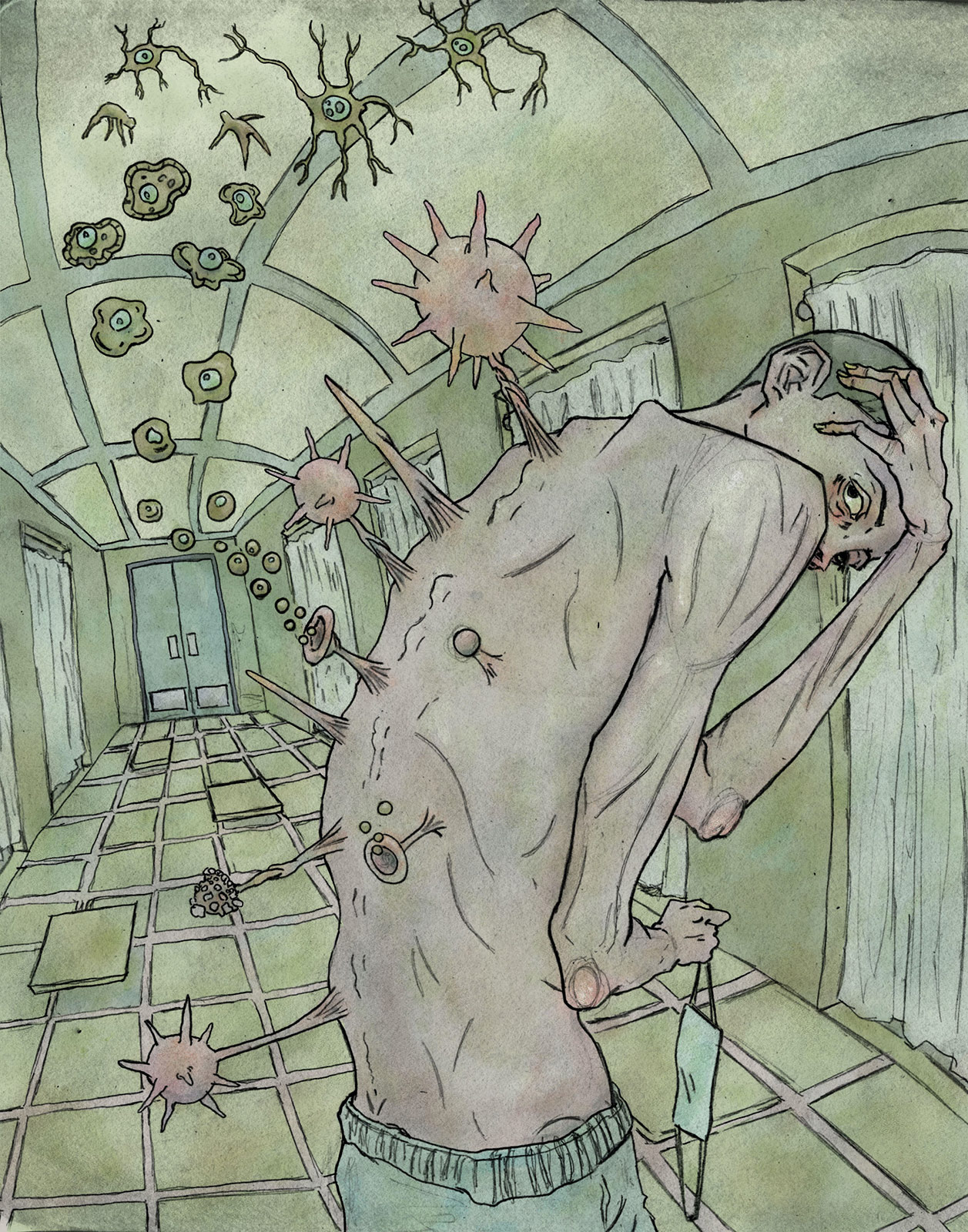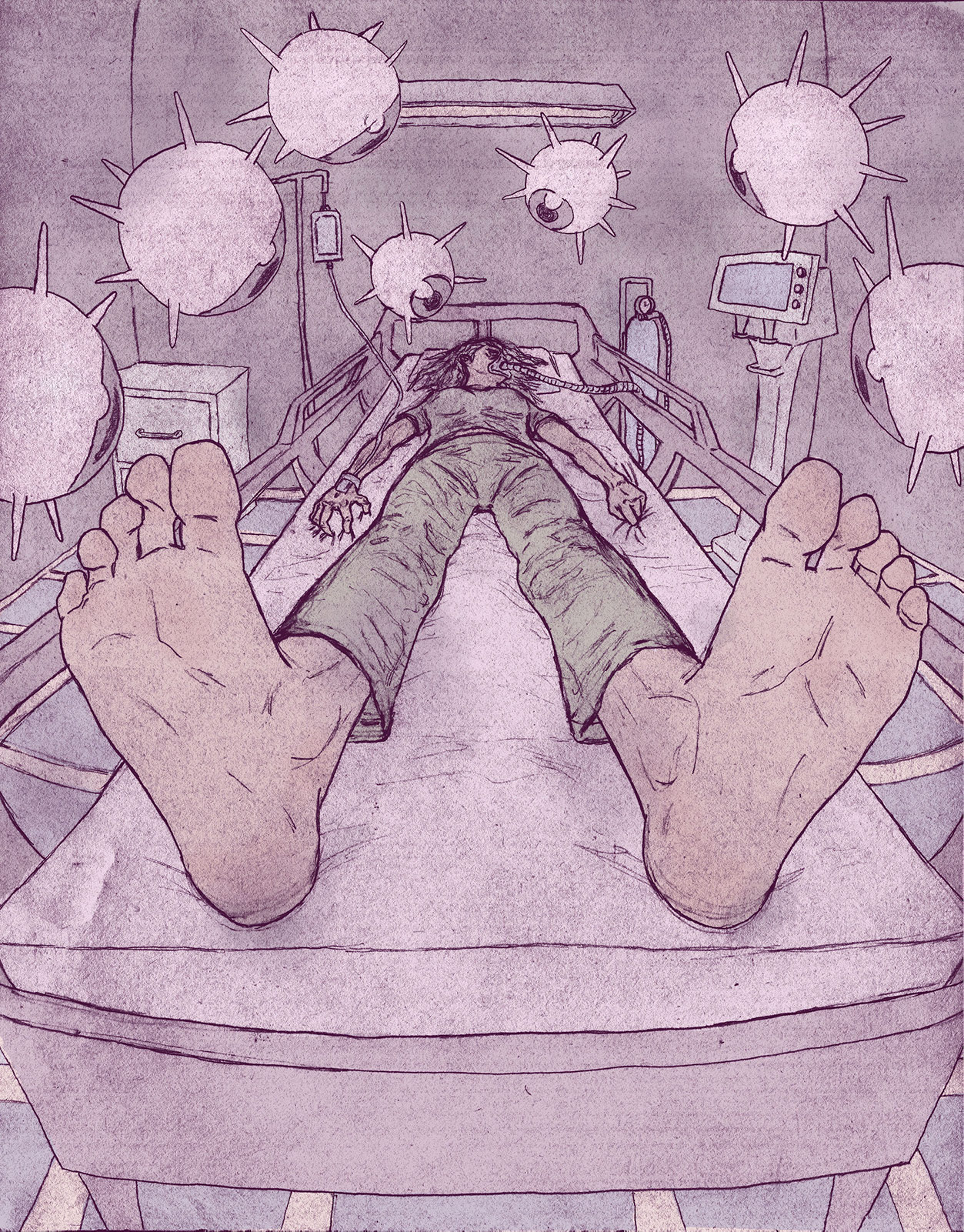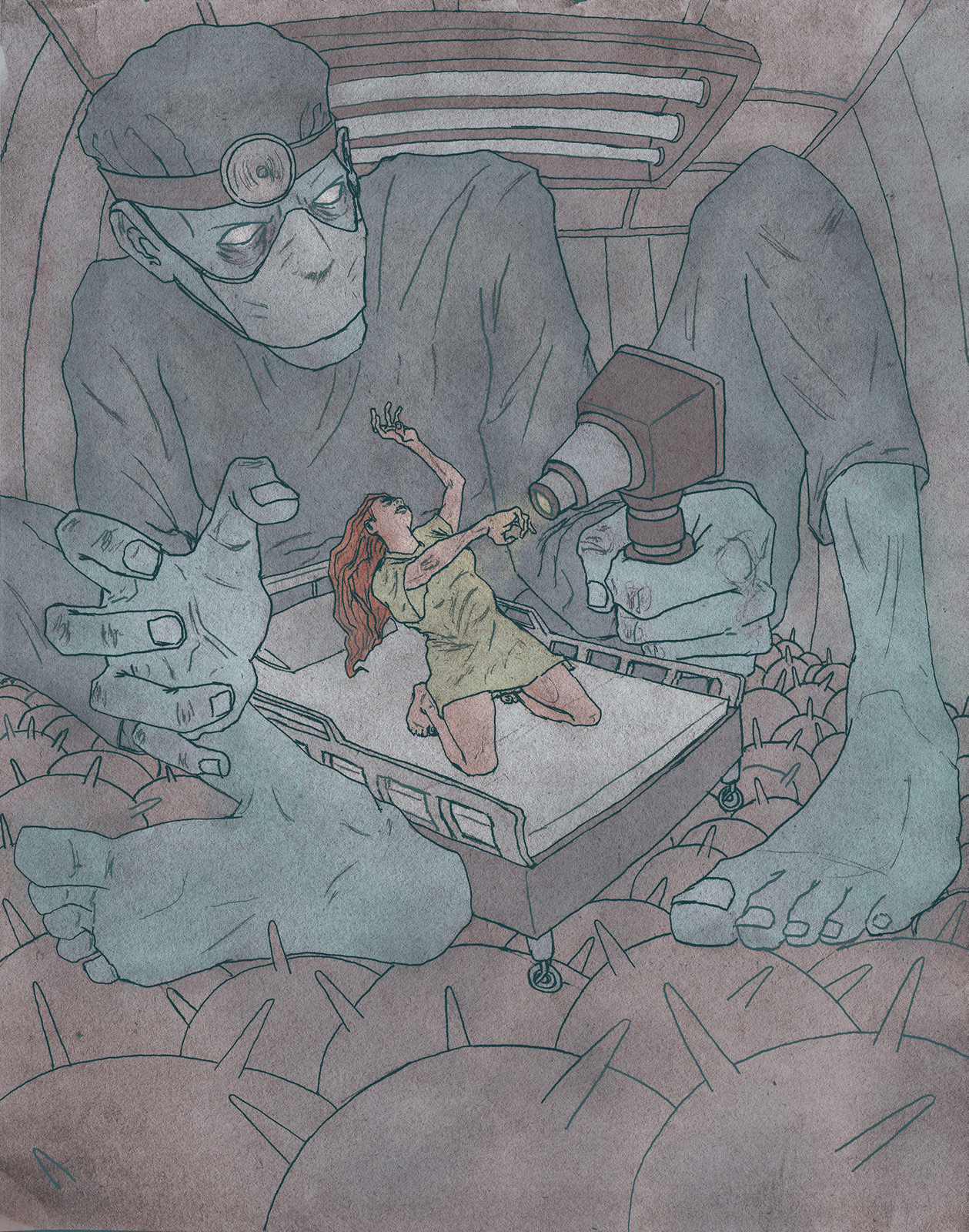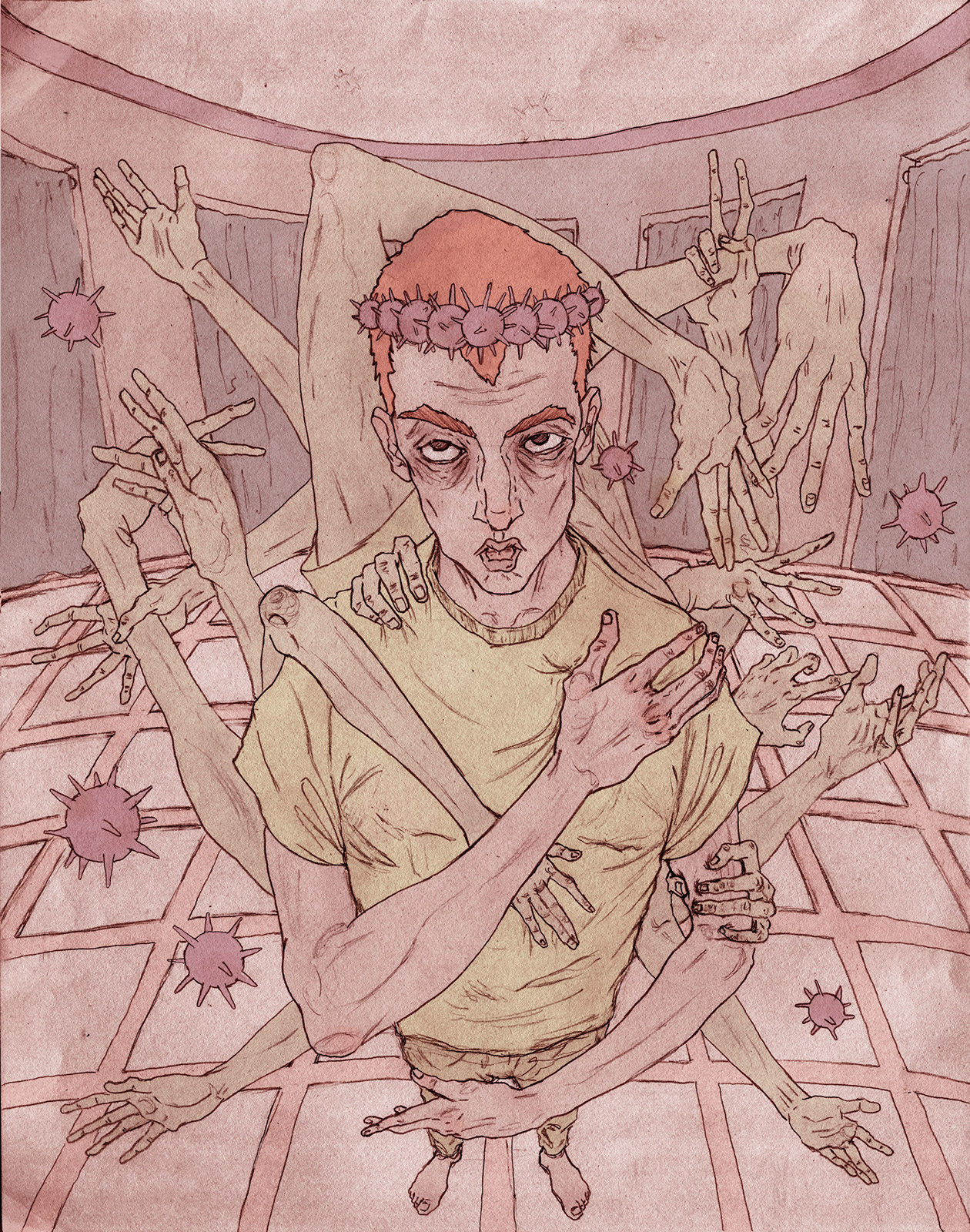Artist Statement
Paranoia is a more often than not, unforeseen consequence of traumatic events. This year has presented a litany of such events, however all but few were eclipsed by the global COVID-19 pandemic. Primarily, the uncertainty and disruption that this virus has caused to our daily lives, has resulted in the spread of hysteria, mistrust, and doubt among individuals. Whether it be medical institutions, one’s social bubble, or even one’s self, the persistent feeling of anxiety and paranoia associated with this virus resonates to a lingering and unavoidable terror at the forefront of one’s psyche. This series explores the philosophical, societal, and existential implications that this pandemic has on our collective way of thinking.
In the 20th century, writer/philosopher Albert Camus published the fictional novel, “The Plague”. In his writing he creates a fatal epidemic which rapidly becomes widespread within a town. The introduction of this hypothetical plague enables the exploration of the mental states of those living through a pandemic. One of the primary exploits of this novel was to describe what “plague” meant for humanity, and more directly, the individual. My series follows the notion outlined by Camus’ philosophy that the general absurdity and consequential despair that this pandemic has brought forth results in a fear and angst over the realization of one’s own mortality. The influence of his writings is abundantly clear in a variety of stylistic and narrative approaches taken in the creation of the images in my series. For example, the sparse haunting melancholic prose that the literature takes within the novel, manifests itself in the surreal and liminal subject matter of my series. The use of exaggerated angles and figures further develops this notion of unease and tension. The viewpoint of each piece is taken from that of a concerned observer which mimics Camus’ protagonist who is a medical professional narrating his experiences as he navigates through similar circumstances of the COVID-19 pandemic.
My series creates a narrative of those who are infected by the virus and the paranoia associated with the fear of contracting and spreading it. The use of grotesque figures is employed to personify the trepidation of one’s deepest nightmares linked to this pandemic. One such influence on the use of distorting the subjects in each piece is Egon Schiele, who used similar methods in his work to explore ideas of death, illness, and mortality through the human figure. Egon Schiele had passed away during the Spanish Flu pandemic a century prior to the one taking place today. Consequently, the aforementioned themes and his stylistic influence were selectively utilized as a form of homage when approaching the subject matter of human mentality during a pandemic. Furthermore, this series employs the use of traditional media as well as digital to act as a portal between Camus’ and Schiele’s time and experiences, to compare and contrast those occurring in present day. This motif is further emulated through the muted “fever-dream” colour palette in each piece. Utilizing modern illustration techniques on aged paper to create a connection in time as well as a form of documentation of society’s current experiences. Specifically, the fears we have today are recorded in the four pieces:
“I Am the Virus” explores the fears of being a carrier of the virus.
“All Eyes” voices the stigma of contracting the virus as well as the ideas of death associated with it.
“The Puppeteer” depicts the hysteria and fear created regarding health care professionals and the new public health guidelines.
“King of Limbs” illustrates the fear of touch and physical contact.
Each piece is connected through the setting of a hospital which is a place that houses both healing and death, the latter steering the tone of the current pandemic. This brings our thoughts back to how the paranoia caused by this pandemic catalyzes mass realization of how fragile our mortality truly is. This series hopes to act as a time capsule to echo this realization. A memento to serve as a reminder that even though the population is divided by our fears of existential realization, we are connected through the ideology that our time will always be limited. This realization can be dismal, but our sanity does not need to be lost when facing this truth because we also remain connected through our sense of humanity.





